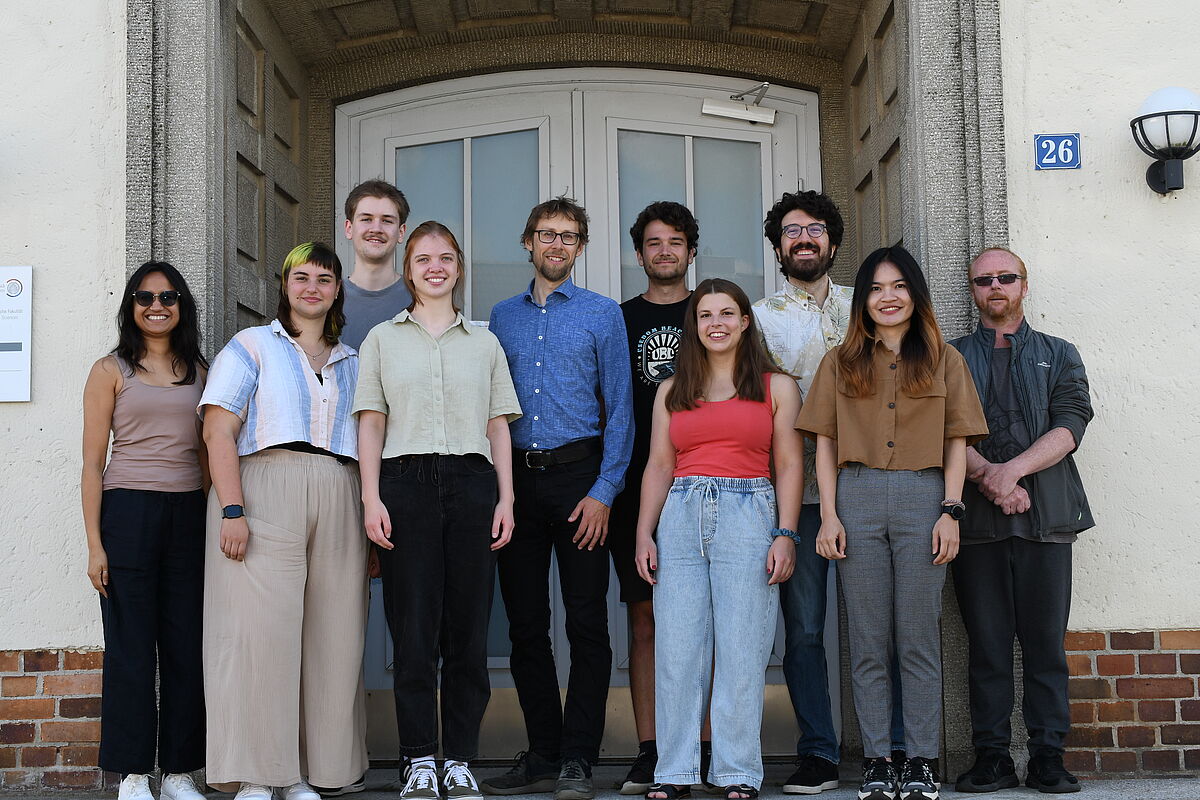
Group photo August 2024
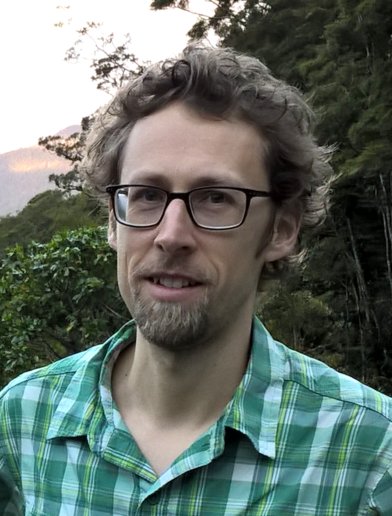
Dr. Jonas Wolff
Research Group Leader
Zoologisches Institut und Museum
Evolutionäre Biomechanik
Soldmannstraße 14
2. OG, Raum 2.09
17489 Greifswald
Tel.: +49 (0)3834 420-4243
j[dot]wolff[at]uni-greifswald[dot]de
Research Interests
My topic of research is phenotypic and functional biodiversity. With broad integrative comparative and phylogenetic approaches I aim to contribute to the understanding of why life on our planet is so diverse, the drivers of phenotypic and functional change, and how different components of the phenotype (morphology, behaviour and mechanical properties) evolve in concert and affect ecological functions. One focus of research is 'evolutionary biomechanics', i.e. I aim to clarify the evolutionary origins and effects of outstanding physical performance of biological materials, structures and organisms. This is crucial for the understanding of the biological roles of organisms (such as in predator prey interactions) and their change over time. Furthermore, my research helps to identify interesting model systems that can inform technological innovations in a process called 'biomimetics'. Besides, I am interested in the phylogenetics, systematics, biogeography and functional morphology of arthropods, especially arachnids.
| since 09/2022 | Research Group Leader at the University of Greifswald, Germany. ERC-project SuPerSilk - Melding behavioural ecology and biomaterials research to track the evolution of mechanical super-performance of spider silk composites |
| since 02/2021 | Project Leader at the University of Greifswald, Germany. DFG-project A window into key events of spider evolution: Tracking the phylogenetic history of a phenotypically dynamic clade of spiders - the Austral marronoids |
| since 02/2021 | Honorary Postdoctoral Fellow at Macquarie University, Sydney. PhD supervisor and collaborative research projects |
| 01/2019 – 01/2021 | ARC Discovery Early Career Researcher Award Research Fellow at Macquarie University, Australia. DECRA-project Building your future: builder-building coevolution in animal architectures |
| 01/2016 – 12/2018 | Macquarie University Research Fellow at Macquarie University, Australia. MQRF-project Tough stickers: How are thread anchors of spiders structurally optimized and ecologically adjusted? |
| 08/2015 – 12/2015 | PostDoc at the University of Kiel, Germany. Research on surface effects in biological materials. Lecturing Grundlagen der Zoologie, Praktikum |
| 01/2013 – 06/2013 | Scientific Employee at the Zoological Institute, University of Kiel, Germany. Research on arthropod attachment organs |
| 11/2009 – 12/2012 | Scientific Student Employee at the Zoological Institute, University of Kiel, Germany. Research on spider attachment organs. Educational assistant |
| 09/2006 – 08/2007 | Volunteer (FöJ als Zivildienst-Ersatz) at the Species Conservation Department at the district exchange Treptow-Köpenick, Berlin. Field work and data processing (monitoring of bat, amphibian and reptile populations), practical species conservation measures, processing of applications for keeping internationally protected (WA) species |
| 01/2013 – 08/2015 | Dr. rer. nat. at the University of Kiel, Germany, as a Scholar of the German National Merit Foundation, graded Summa cum laude (with distinction). Project title: Comparative functional morphology of attachment devices in Arachnida. Supervisor: Prof. Stanislav Gorb. Referees: Prof. Hinrich Schulenburg (University of Kiel), PD Dirk Brandis (Zoological Museum Kiel), Prof. Rolf Beutel (Friedrich Schiller University Jena) |
| 10/2010 – 02/2013 | Master of Science in Biology at the University of Kiel, Germany. Majors: Biodiversity and Evolution; Ecology. Minors: Environmental Management and Conservation; Geography. Master’s Thesis: Phylogenetic analysis of hairy adhesive pads in spiders (Arachnida, Araneae); Supervisor: Prof. Stanislav Gorb |
| 10/2007 – 09/2010 | Bachelor of Science in Biology at University of Kiel, Germany |
| 2022 – 2027 | ERC Starting Grant (PI) |
| 2021 – 2024 | DFG Individual Research Grant (PI) |
| 2020 | Company of Biologists Scientific Meeting Grant |
| 2019 – 2021 | ARC Discovery Early Career Researcher Award (PI) |
| 2017 | Early Career Researcher Outstanding Paper Prize of the Journal of Experimental Biology |
| 2017 | Company of Biologists Travel Grant (PI) |
| 2016 – 2018 | Macquarie University Research Fellowship (PI) |
| 2016 – 2017 | DFG Research Fellowship (PI) [declined in favour of MQRF] |
| 2016 | KiNSIS PhD-Award for Nano Life Science of the core network Kiel Nano, Surface and Interface Science |
| 2016 | Annual Faculty-Award ‘Best PhD-Thesis’ of the Faculty of Mathematics and Science, University of Kiel |
| 2013 – 2015 | PhD Scholarship of the German National Merit Foundation (Studienstiftung des Deutschen Volkes) (PI) |
| 2015 | DAAD (German Academic Exchange Service) Travel Grant (PI) |
| 2014 | Biodiversity Award (Förderpreis Biodiversität) of the Academy of Sciences and Literature Mainz |
| 2014 | DAAD (German Academic Exchange Service) Travel Grant (PI) |
| 2014 | Society of Experimental Biology Student Travel Grant (PI) |
| 2013 | Student Grant of the 19th International Congress of Arachnology (PI) |
| 2012 | Annual Award of the ‘Förderverein der Mathematisch-Naturwissenschaftlichen Fakultät der Christian-Albrechts-Universität zu Kiel’ |
| 2011 | Society of Experimental Biology Student Travel Grant (PI) |
Teaching Experience
| Lecturer | University of Kiel biol-102 Grundlagen der Zoologie (2015): practical course for first semester undergraduates on animal anatomy |
| Guest lecturer | Workshop / Lab practical Evolutionary Biomechanics and Biomimetics for graduate (Master) students (2023 and 2024) |
| University of Greifswald Tieranatomische Übungen and Großpraktikum Zoologie (2021 – 2024) | |
| Macquarie University BIOL316 Invertebrate Biology (2020) | |
| University of Bern Arachnological Colloquium (2013) | |
| Instructor | Macquarie University BIOL711 Topics in Evolution (2017): writing skill course for graduates |
| University of Kiel biol-251 Biologie der Insekten (2015): practical course on insect biomechanics for graduates | |
| University of Kiel biol-252 Biomechanik und Bionik (2015): practical course on insect biomechanics for graduates | |
| University of Kiel biol-167 Grundlagen der Bionik (2014): practical course on insect biomechanics for undergraduates | |
| University of Kiel biol-104 Exkursionen (2010-11): Zoological excursions for undergraduates | |
| Teaching Assistant | University of Kiel biol-104 Bestimmungsübungen, biol-102 Grundlagen der Zoologie, biol-151 Baupläne und deren Wandlungsfähigkeit im Tierreich (2009-12): Undergraduate courses on animal anatomy and species identification |
| Supervisor | Master’s thesis (University of Greifswald, 2024-25) |
| 2 Bachelor’s theses (University of Greifswald, 2024-25) | |
| PhD thesis (University of Greifswald, since 2024) | |
| PhD thesis (University of Greifswald, since 2023) | |
| PhD thesis (University of Greifswald, since 2022) | |
| PhD thesis (Macquarie University, co-supervision, 2019-23) | |
| PhD thesis (University of Greifswald, co-supervision, since 2021) | |
| Master’s thesis (University of Greifswald, 2022-23) | |
| Master’s thesis (Macquarie University, co-supervision, 2017-18) | |
| Master’s thesis (University of Bern, external co-supervision, 2014-15) | |
| 5 Bachelor’s theses (University of Kiel, 2013-16) |
| Google Scholar |
| Research Gate |
| Names underlined were students or postdocs under my supervision. |
| * equal contribution |
| Full publication list: zoologie.uni-greifswald.de/struktur/abteilungen/erc-junior-research-group-evolutionary-biomechanics/publications/ |
| Wolff JO (2024) Spider silk tensile performance does not correlate with web use. Evolution, qpae135. doi.org/10.1093/evolut/qpae135 |
| Wolff JO, Ashley LJ, Schmitt C, Heu C, Denkova D, Jani M, Řezáčová V, Blamires SJ, Gorb SN, Garb J, Goodacre SL, Řezáč M (2024) From fibres to adhesives: evolution of spider capture threads from web anchors by radical changes in silk gland function. Journal of the Royal Society Interface 21, 20240123. doi.org/10.1098/rsif.2024.0123 |
| Wolff JO, Rößler DC (2024) Evolution: decoding the adaptation of multi-eyed visual systems. Current Biology 34, R675-R677. doi.org/10.1016/j.cub.2024.05.052 |
| Wolff JO, Kennedy SR, Houghton M, Pascoe P, Gajski D, Derkarabetian S, Fraser C, Krehenwinkel H, Renault D (2024) Infrequent long-range dispersal and evolution of a top terrestrial arthropod predator in the sub-Antarctic. American Naturalist 204, 191-199. doi.org/10.1086/730827 |
| Liprandi D*, Ramírez M*, Schlüter S, Baumgart L, Joel A-C, Michalik P, Wolff JO (2024) Hierarchical looping results in extreme extensibility of silk fibre composites produced by Southern house spiders (Kukulcania hibernalis). Journal of the Royal Society Interface Focus 14, 20230071. doi.org/10.1098/rsfs.2023.0071 |
| Gajski D, Wolff JO, Melcher A, Weber S, Prost S, Krehenwinkel H, Kennedy S (2024) Facilitating taxonomy and phylogenetics: An informative and cost-effective protocol integrating long amplicon PCRs and third-generation sequencing. Molecular Phylogenetics and Evolution 192, 107988. doi.org/10.1016/j.ympev.2023.107988 |
| Kelly MJB, Khan K, Wierucka K, Jones BR, Shofner R, Derkarabetian S, Wolff JO (2023) Dynamic evolution of locomotor performance independent of changes in extended phenotype use in spiders. Proceedings of the Royal Society: Biological Sciences 290, 20232035. doi.org/10.1098/rspb.2023.2035 |
| Wolff JO, Wierucka K, Paterno G, Coddington JA, Hormiga G, Kelly MBJ, Herberstein ME, Ramírez MJ (2022) Stabilized morphological evolution of spiders despite mosaic changes in foraging ecology. Systematic Biology 71, 1487–1503. (Journal Cover) doi.org/10.1093/sysbio/syac023 |
| Herberstein ME, McLean DJ, Lowe E, Wolff JO, Khan MK, Smith K, Allen AP, Bulbert M, Buzatto BA, Eldridge MBD, Falster D, Winzer LF, Griffith SC, Madin JS, Narendra A, Westoby M, Whiting MJ, Ian Wright, Carthey A (2022) AnimalTraits: a curated animal database for body mass, metabolic rate and brain size. Scientific Data 9, 265. doi.org/10.1038/s41597-022-01364-9 |
| Pekár S, Wolff JO, Černecká L, Birkhofer K, Mammola S, Lowe EC, Fukushima CS, … , Cardoso P (2021) The World Spider Trait database (WST): a centralised global open repository for curated data on spider traits. Database 2021, baab064. doi.org/10.1093/database/baab064 |
| Wolff JO, Wierucka K, Uhl G, Herberstein ME (2021) Building behaviour does not affect rates of phenotypic evolution in spiders. Proceedings of the National Academy of Sciences USA 118, e2102693118. doi.org/10.1073/pnas.2102693118 |
| Lowe E*, Wolff JO*, Aceves-Aparicio A, Birkhofer K, Branco VV, Cardoso P, …, and Marie E. Herberstein (2020) Towards establishment of a centralized spider traits database. Journal of Arachnology 48, 103-109. doi.org/10.1636/0161-8202-48.2.103 |
| Wolff JO, Paterno GB, Liprandi D, Ramírez MJ, Bosia F, van der Meijden A, Michalik P, Smith HM, Jones BR, Ravelo AM, Pugno N, Herberstein M (2019) Evolution of aerial spider webs coincided with repeated structural optimization of silk anchorages. Evolution 73, 2122-2134. doi.org/10.1111/evo.13834 |
| Wolff JO, van der Meijden A, Herberstein ME (2017) Distinct spinning patterns gain differentiated loading tolerance of silk thread anchorages in spiders with different ecology. Proceedings of the Royal Society: Biological Sciences 284, 20171124. doi.org/10.1098/rspb.2017.1124 |
| Wolff JO, Wells D, Reid CR, Blamires SJ (2017) Clarity of objectives and working principles enhances the success of biomimetic programs. Bioinspiration & Biomimetics 12, 051001. doi.org/10.1088/1748-3190/aa86ff |
| Wolff JO, Herberstein MH (2017) Three-dimensional printing spiders: back-and-forth glue application yields silk anchorages with high pull-off resistance under varying loading situations. Journal of The Royal Society Interface 14, 20160783. (Journal Cover) doi.org/10.1098/rsif.2016.0783 |
| Wolff JO, Řezáč M, Krejčí T, Gorb SN (2017) Hunting with sticky tape: functional shift in silk glands of araneophagous ground spiders (Gnaphosidae). Journal of Experimental Biology 220, 2250-2259. (Editor’s Choice) doi.org/10.1242/jeb.154682 |
| Wolff JO, Grawe I, Wirth M, Karstedt A, Gorb SN (2015) Spider’s super-glue: Thread anchors are composite adhesives with synergistic hierarchical organization. Soft Matter 11, 2394. doi.org/10.1039/C4SM02130D |
| Wolff JO, Gorb SN (2011) The influence of humidity on the attachment ability of the spider Philodromus dispar (Araneae, Philodromidae). Proceedings of the Royal Society: Biological Sciences 279, 139-143. doi.org/10.1098/rspb.2011.0505 |
| Wolff JO, Gorb SN (2016) Attachment structures and adhesive secretions in arachnids. Biologically-inspired systems, Vol. 7. Springer, Cham, Switzerland. 184 pp. doi.org/10.1007/978-3-319-45713-0 |
| Wolff JO (2017) Structural effects of glue application in spiders – What can we learn from silk anchors? In: Heepe L, Xue L, Gorb SN (eds.) Bio-inspired structured adhesives. Springer, Cham, Switzerland. pp 63-80. doi.org/10.1007/978-3-319-59114-8_5 |
| Wolff JO, García-Hernández S, Gorb SN (2016) Adhesive Secretions in Harvestmen (Arachnida: Opiliones). In: Smith AM (ed.) Biological adhesives, 2nd edition. Springer, Cham, Switzerland. pp. 281-301. doi.org/10.1007/978-3-319-46082-6_12 |
| Wolff JO, Schneider J, Gorb SN (2014) How to pass the gap - Functional morphology and biomechanics of spider bridging threads. In: Miller T, Asakura T (eds.) Biotechnology of silk. Springer, Heidelberg. pp. 165-177. doi.org/10.1007/978-94-007-7119-2_9 |
Dr. Daniele Liprandi
Postdoctoral Researcher
Soldmannstraße 14
2. OG, Raum 2.07
17489 Greifswald
Tel.: +49 (0)3834 420-4265
daniele[dot]liprandi[at]uni-greifswald[dot]de
Research Interests
My preferred research topic is computational modelling of soft biological materials. By combining computational physics and the mechanics of elastic soft bodies, I aim to investigate the behaviour of complex composite materials, as spider silk threads and anchorages. One focus of this topic of research is understanding how different natural systems can have different response to external stimuli while using similar "building blocks", e.g. a small set of proteins. This is usually achieved by exploiting different geometries with peculiar degrees of freedom, which allows for a tunability of the physical properties of the system. This tunability is crucial, for example, in the vertical locomotion of the animals. During locomotion, arthropods and reptiles continuously alternate strong adhesion and easy detachment by tuning the angles formed by their pads and toes, or the direction of the applied force. The same principles can be extended to other biological bodies, e.g. human organs, and aid in the development of biomedical devices. Other topics I like to explore are soft tissue mechanics, bone mechanics, artificial and biological adhesive systems, extreme mechanics, molecular dynamics, C/C++/Python developing.
Liprandi D, Ramírez M, Schlüter S, Baumgart L, Joel A-C, Michalik P, Wolff JO (2024) Hierarchical looping results in extreme extensibility of silk fibre composites produced by Southern house spiders (Kukulcania hibernalis). Journal of the Royal Society Interface Focus 14, 20230071. doi.org/10.1098/rsfs.2023.0071
Liprandi D, Misseroni D, Bosia F, Fraldi M, Pugno NM (2022) A 3D Griffith peeling model to unify and generalize single and double peeling theories. Meccanica 57, 1125–1138. https://doi.org/10.1007/s11012-022-01480-1
Wolff JO, Liprandi D, Bosia F, Joel AC, Pugno NM (2021) Robust substrate anchorages of silk lines with extensible nano-fibres. Soft Matter 17, 7903–7913. https://doi.org/10.1039/D1SM00552A
Liprandi D, Bosia F, Pugno NM (2020) A theoretical-numerical model for the peeling of elastic membranes. Journal of the Mechanics and Physics of Solids 136, 103733. https://doi.org/10.1016/j.jmps.2019.103733
Wolff JO, Paterno GB, Liprandi D, Ramírez MJ, Bosia F, van der Meijden A, Michalik P, Smith HM, Jones BR, Ravelo AM, Pugno N, Herberstein M (2019) Evolution of aerial spider webs coincided with repeated structural optimization of silk anchorages. Evolution 73, 2122–2134. doi.org/10.1111/evo.13834
Brely L, Liprandi D, Bosia F, Pugno NM (2017) Optimal adhesion control via cooperative Hierarchy, grading, geometries and non-linearity of anchorages and adhesive pads. In: Heepe L, Xue L, Gorb SN (eds.) Bio-inspired structured adhesives. Springer, Cham, Switzerland. pp. 81–93. https://doi.org/10.1007/978-3-319-59114-8_6

Dr. Michael Kelly
Postdoctoral Researcher
Soldmannstraße 14
2. OG, Raum 2.07
17489 Greifswald
Tel.: +49 (0)3834 420-4265
michael[dot]kelly[at]uni-greifswald[dot]de
Research Interests
My research interests include animal behaviour (especially predator-prey interactions), neuroanatomy, and evolutionary ecology. I aim to contribute to our understanding of the macro-scale dynamics involved in evolution and natural selection, including the limitations of trait evolution. For this purpose, I am combining diverse comparative trait measurements and imaging techniques with phylogenomic methods. My previous research was focused on mimicry, more specifically the paradox of inaccurate mimicry, using ant-mimicking (myrmecomorphic) spiders. With the production of a large phylogenetic dataset and the development of a new method to quantify mimicry accuracy, I uncovered the tempo and mode of mimicry evolution in myrmecomorphic spiders. Further, I studied the consequences of a myrmecomorphic habitus on anatomical features (central nervous system and venom glands) as an example for a potential trade-off between functional traits, driving the evolutionary dynamics of trait expression. During my research I have also obtained experience in behavioural assays. Specifically, I ran predator experiments in which I presented video simulations to predatory jumping spiders to test what the key traits are for predator decision making in relation to ant mimicry. My current work focuses on the evolutionary dynamics of the marronoid clade of spiders - a group of closely related spiders known for possessing an array of prey capture techniques including cursorial and snare-based hunting.
Kelly MJB, Penna‐Gonçalves V, Willmott NJ, McLean DJ, Black JR, Wolff JO, Herberstein ME (2024) Small brains: body shape constrains tissue allocation to the central nervous system in ant‐mimicking spiders. Journal of Comparative Neurology 532, e25680. https://doi.org/10.1002/cne.25680
Kelly MJB, Khan K, Wierucka K, Jones BR, Shofner R, Derkarabetian S, Wolff JO (2023) Dynamic evolution of locomotor performance independent of changes in extended phenotype use in spiders. Proceedings of the Royal Society: Biological Sciences 290, 20232035. https://doi.org/10.1098/rspb.2023.2035
Wolff JO, Wierucka K, Paterno G, Coddington JA, Hormiga G, Kelly MJB, Herberstein ME, Ramírez MJ (2022) Stabilized morphological evolution of spiders despite mosaic changes in foraging ecology. Systematic Biology 71, 1487–1503. https://doi.org/10.1093/sysbio/syac023
Kelly MJB, McLean DJ, Wild ZK, Herberstein ME (2021) Measuring mimicry: methods for quantifying visual similarity. Animal Behaviour 178, 115-126. https://doi.org/10.1016/j.anbehav.2021.06.011
Umbers KD, Riley JL, Kelly MJB, Taylor‐Dalton G, Lawrence JP, Byrne PG (2020) Educating the enemy: Harnessing learned avoidance behavior in wild predators to increase survival of reintroduced southern corroboree frogs. Conservation Science and Practice 2, e139. https://doi.org/10.1111/csp2.139
Kelly MJB, Truscott H, Andersen TR, Shibuya A (2017) Amazon wildlife ecology. An introduction to wildlife conservation in the Brazilian Amazon: a view from northern Australia. Brazilian Amazon Field Intensive (BAFI). Charles Darwin University, Darwin, 13-24.
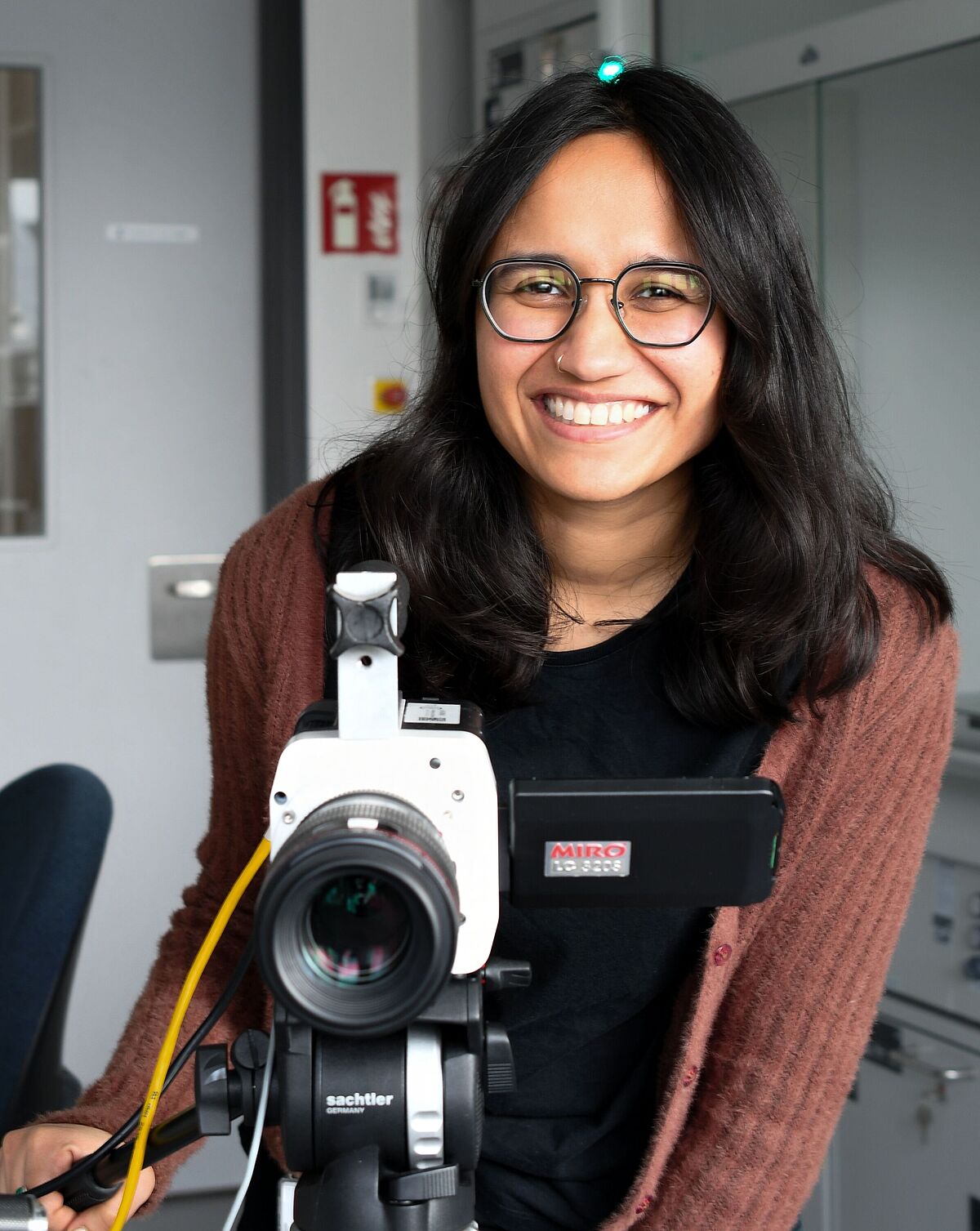
Maitry Jani
PhD candidate
Soldmannstraße 14
2. OG, Raum 2.07
17489 Greifswald
Tel.: +49 (0)3834 420-4265
Thesis topic
Comparative analysis of the behavioural use of different silk glands in spiders
Research Interests
I am interested in animal behavior and ecology. My past research experiences on reptiles, mammals, and arachnids in broad-spectrum have motivated me to appreciate and understand the complex systems of animal phylogeny and ecology. Invertebrates, especially arachnids have fascinated me since my college days. With passion, I strived to pursue my interest, especially in spiders by choosing it as a study model. My current research focuses on studying the biology of spiders and their silk glands. This will be achieved by combining field and behavioral studies in the lab. I aim to establish a detailed understanding of the functioning of spider silk glands through morphological studies and experiments in the lab. This will allow a comprehensive study on silk gland diversification, web architecture, and behavioral applications.
Wolff JO, Ashley LJ, Schmitt C, Heu C, Denkova D, Jani M, Řezáčová V, Blamires SJ, Gorb SN, Garb J, Goodacre SL, Řezáč M (2024) From fibres to adhesives: evolution of spider capture threads from web anchors by radical changes in silk gland function. Journal of the Royal Society Interface 21, 20240123. doi.org/10.1098/rsif.2024.0123
Jani M, Caleb JT, Kapoor V, Kulkarni S, Uma D (2023) Aliens in the society: foreign arthropods and small vertebrates associated with the social spider Stegodyphus sarasinorum Karsch, 1892 (Araneae: Eresidae). Journal of Arachnology 51, 57–62. https://doi.org/10.1636/JoA-S-22-004
Babu N, Caleb JT, Jani M, Uma D, Prasad G (2022) On the taxonomy and distribution of the orb-weaving spider Philoponella feroka (Bradoo, 1979) n. comb. from India (Araneae, Uloboridae). Zootaxa 5087, 497–500. https://doi.org/10.11646/zootaxa.5087.3.8
Jani M (2019) Indotyphlops braminus (Brahminy Blind Snake): Diet. Herpetological Review 50, 159–160.
Sharma V, Jani M (2015) Geographical Distribution: Lycodon travancoricus (Travancore wolf-snake). Herpetological Review 46, 574.
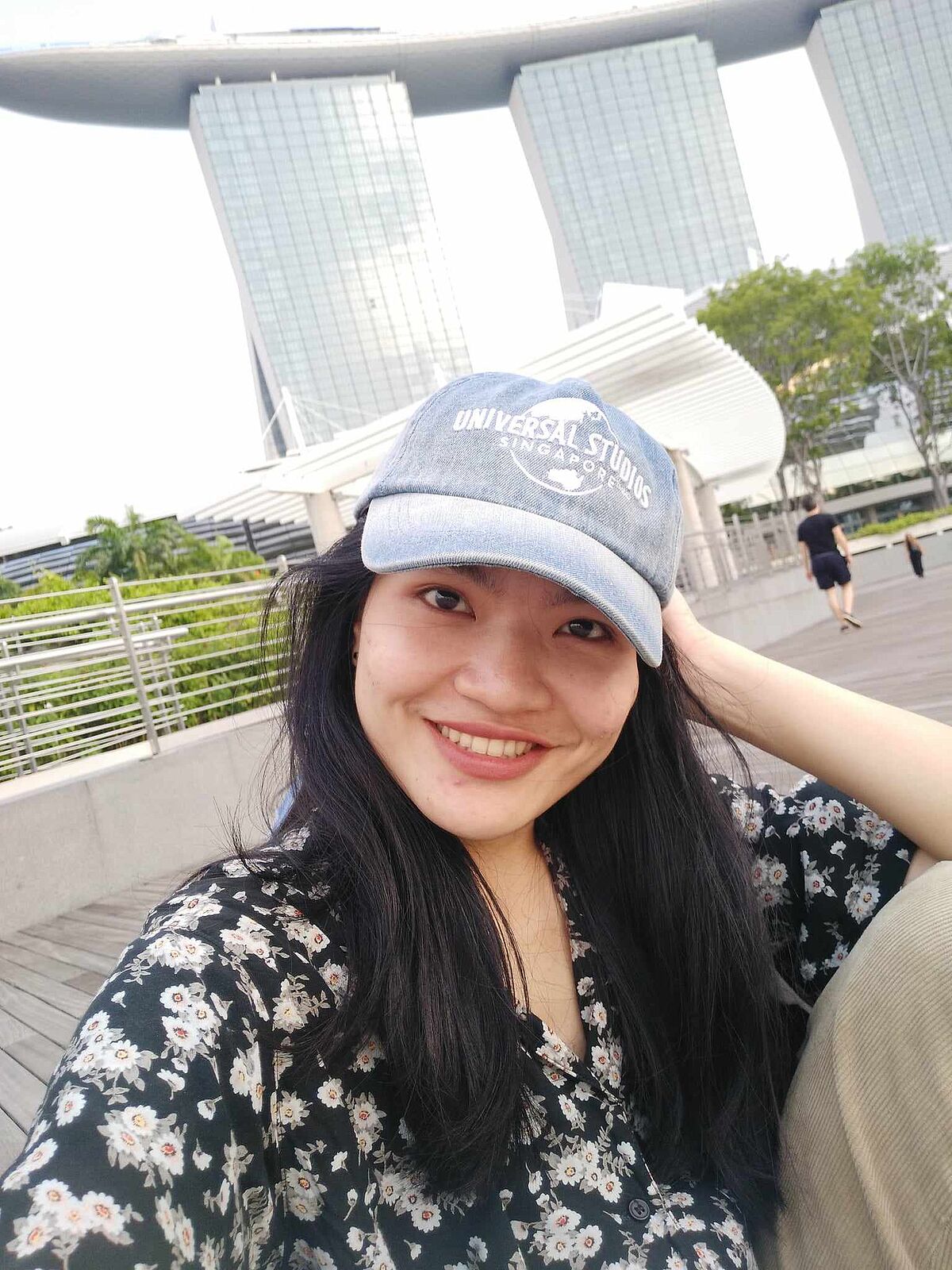
Siripanyo Promnil
PhD candidate
Soldmannstraße 14
2. OG, Raum 2.07
17489 Greifswald
Tel.: +49 (0)3834 420-4265
Thesis topic
Comparative tensile mechanics of spider silk bundles
Research Interests
I am passionate about polymeric materials, biomaterials, and tissue engineering. My previous research was on the topic of biomimetic meniscus scaffolds from electrospun Poly(lactic acid) / Silk fibroin. I have gained experience in biomaterials, electrospinning process, materials characterization (mechanical properties, thermal properties, morphology, degradation), and in vitro cell culture studies (such as cytotoxicity, cell viability, and histological studies). For my present study, I focus on the mechanical properties of the bundles of spider silk.
Publications
Promnil S, Ruksakulpiwat C, Numpaisal P-o, Ruksakulpiwat Y (2022) Electrospun poly(lactic acid) and silk fibroin based nanofibrous scaffold for meniscus tissue engineering. Polymers 14, 2435. https://doi.org/10.3390/polym14122435
Promnil S, Ruksakulpiwat Y, Ruksakulpiwat C, Numpaisal P-o (2022) Effect of silk fibroin content on physical and mechanical properties of electrospun poly(lactic acid)/silk fibroin nanofibers for meniscus tissue engineering scaffold. Journal of Physics: Conference Series 2175, 012016. https://doi.org/10.1088/1742-6596/2175/1/012016
Promnil S, Numpaisal P-o, Ruksakulpiwat Y (2021) Effect of molecular weight on mechanical properties of electrospun poly(lactic acid) fibers for meniscus tissue engineering scaffold. Materials Today: Proceedings 47, 3496–3499. https://doi.org/10.1016/j.matpr.2021.03.504
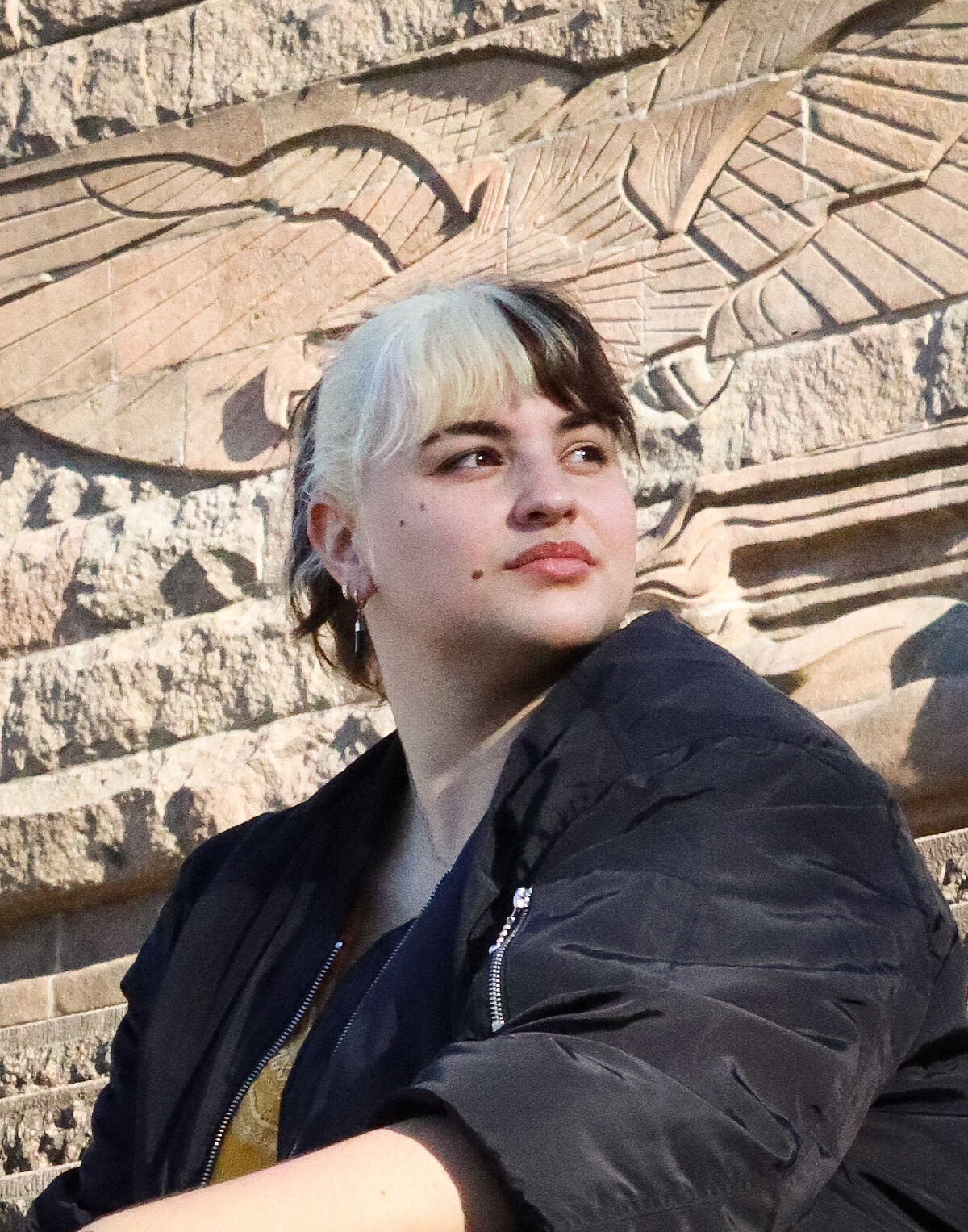
Josefine Kreuz
PhD candidate
Soldmannstraße 14
2. OG, Raum 2.07
17489 Greifswald
Tel.: +49 (0)3834 420-4265
Thesis topic
Evolution of silk flow control mechanisms in spiders
Research Interests
I am broadly interested in the morphology of athropods of all types, especially with regards to the reproductive system, the musculature and the structure of the nervous system. I find the comparative approach particularly interesting and like to work with imaging methods with a focus on 3D reconstruction.
Kreuz J, Michalik P, Wolff JO (2024) Comparative anatomy of the spinneret musculature in cribellate and ecribellate spiders (Araneae). Journal of Morphology 285, e21670. https://doi.org/10.1002/jmor.21670
Kreuz J, Monika JB Eberhard MJB (2022) Asymmetry of the male internal reproductive organs in Mantophasmatodea. BMC Zoology 7, 1-9. https://doi.org/10.1186/s40850-021-00105-6
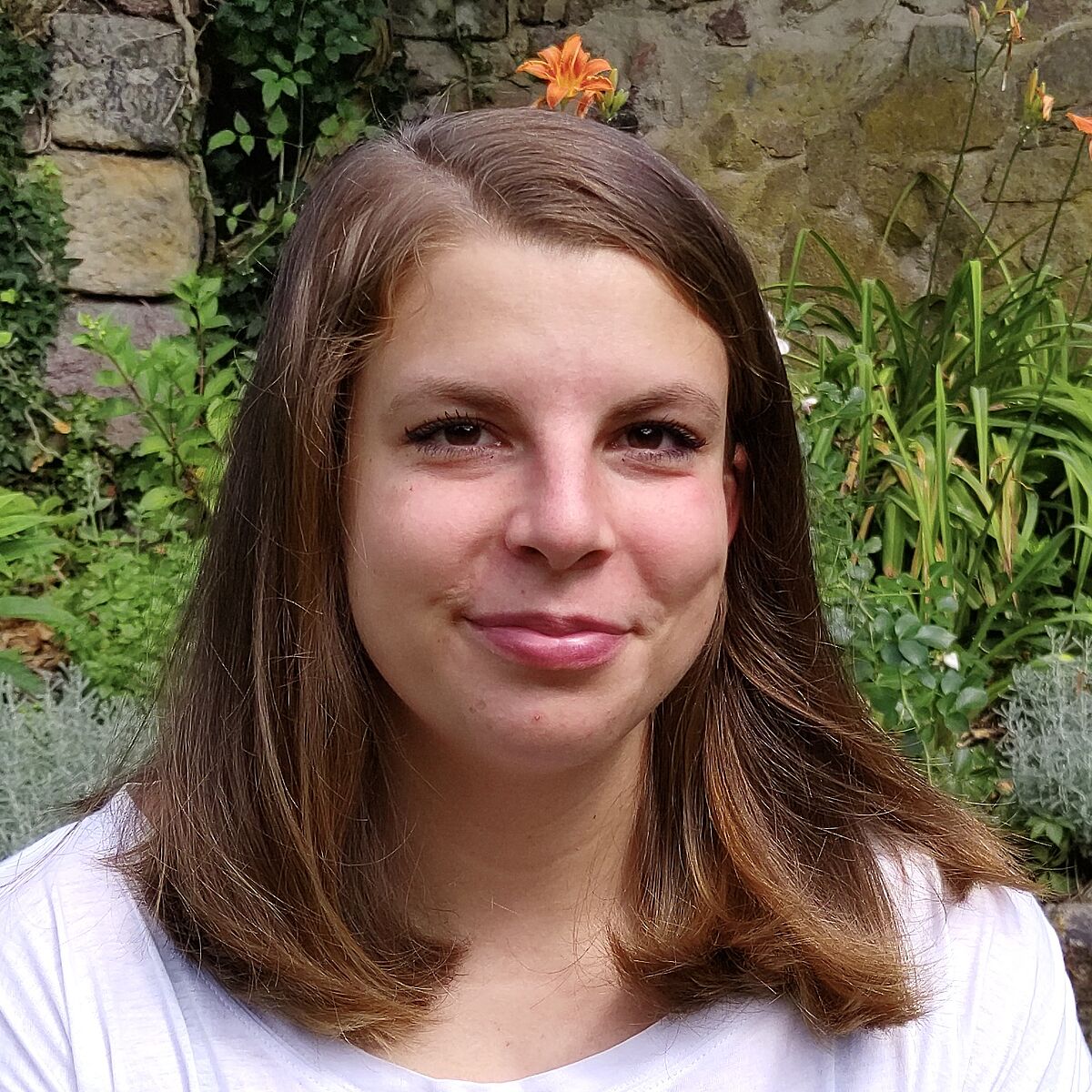
Ronja Eilhardt
M.Sc. candidate
Soldmannstraße 14
2. OG, Raum 2.07
17489 Greifswald
Tel.: +49 (0)3834 420-4265
Thesis topic
Comparative kinematics and evolution of orthopteran jumping
Winkler L, Eilhardt R, Janicke T (2023) Population density affects sexual selection in an insect model. Functional Ecology 37, 2734-2747. https://doi.org/10.1111/1365-2435.14410
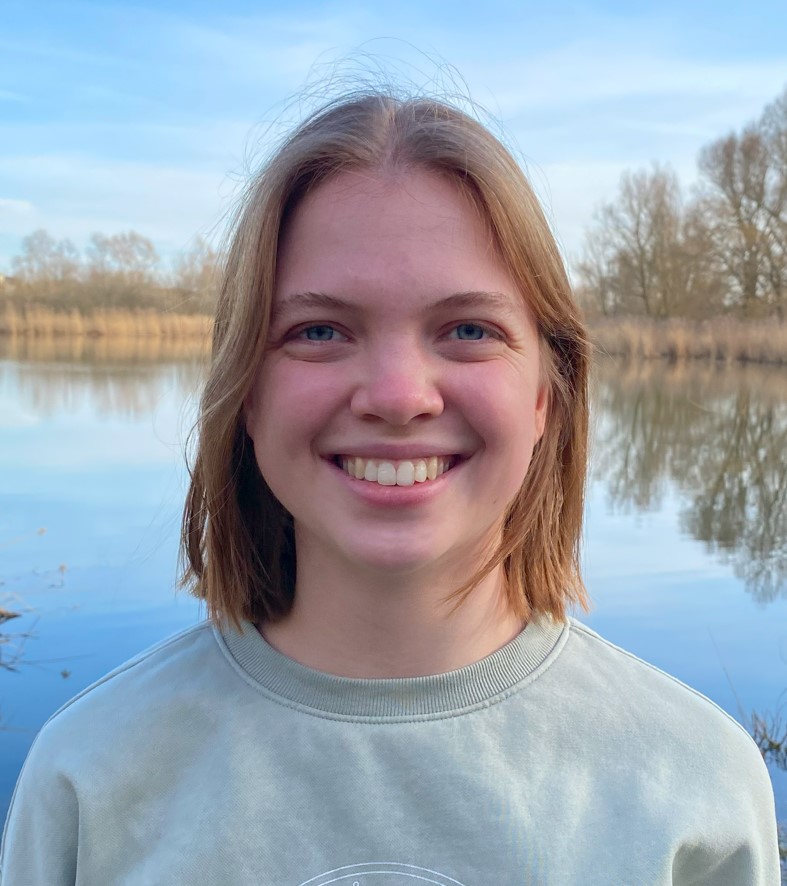
Paula Heinz
B.Sc. candidate
Soldmannstraße 14
2. OG, Raum 2.07
17489 Greifswald
Tel.: +49 (0)3834 420-4265
Thesis topic
Comparative tensile mechanics of ecologically distinct silk threads in Pholcidae
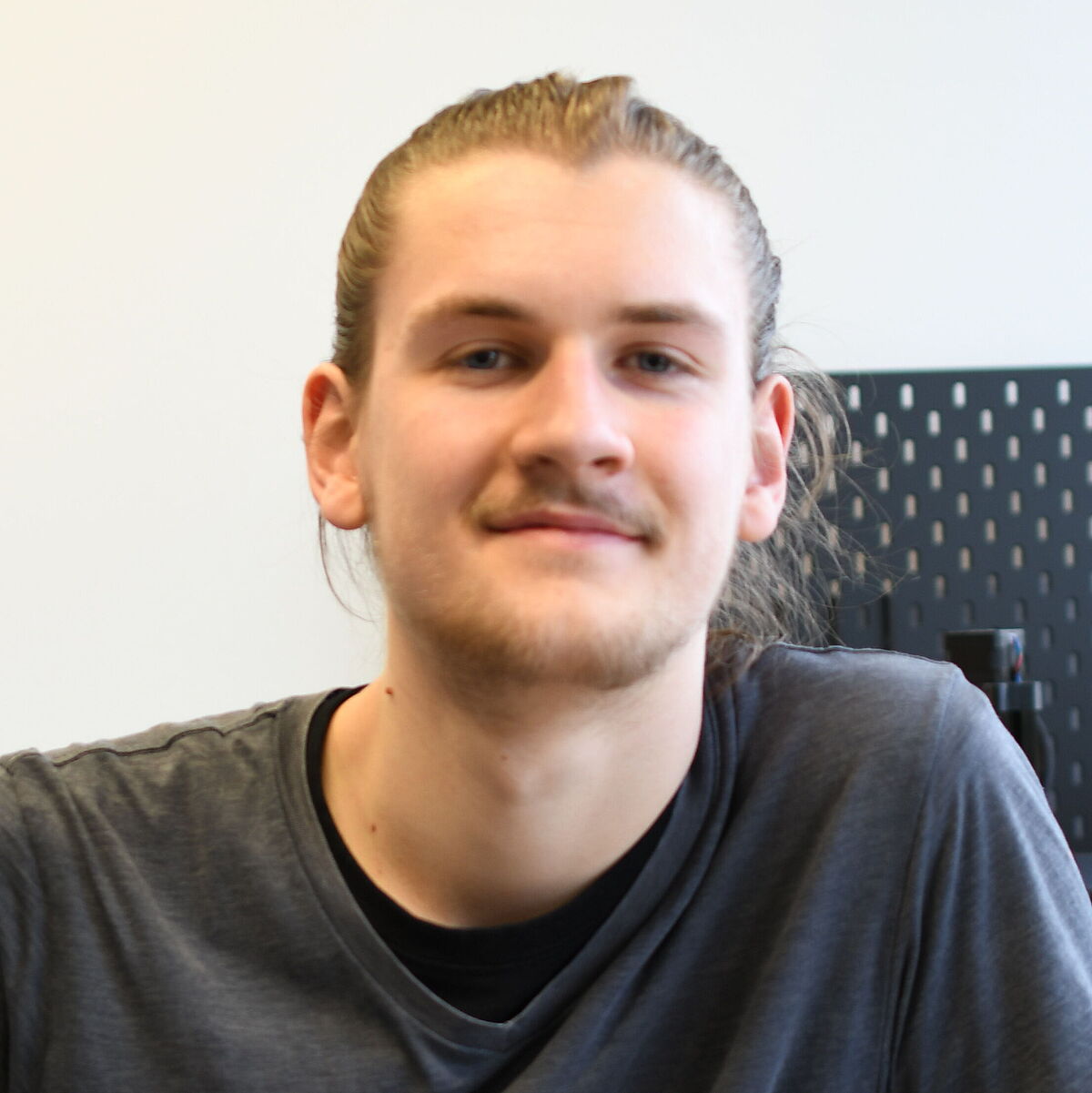
Vincent Jackel
B.Sc. candidate and student research assistant
Soldmannstraße 14
2. OG, Raum 2.07
17489 Greifswald
Tel.: +49 (0)3834 420-4265
Thesis topic
Kinematics of the rapid escape 'bungee'-jump of arboreal sac spiders (Clubionidae)
Lukas Matternja
B.Sc. candidate
Soldmannstraße 14
2. OG, Raum 2.07
17489 Greifswald
Tel.: +49 (0)3834 420-4265
Thesis topic
Taxonomy of Namandia (Matachiidae) - a genus with outstanding spinning organ variability

Tom Illing
Guest B.Sc. candidate (Physics)
Soldmannstraße 14
2. OG, Raum 2.07
17489 Greifswald
Tel.: +49 (0)3834 420-4265
Numerical study ot the tensile properties of complex spider silk fibre bundles
John Seifert
Student research assistant
Soldmannstraße 14
2. OG, Raum 2.07
17489 Greifswald
Tel.: +49 (0)3834 420-4265
Ricarda Hill
Research intern
Soldmannstraße 14
2. OG, Raum 2.07
17489 Greifswald
Tel.: +49 (0)3834 420-4265
Alumni
| Milena Zerbe | 2023 - Student Research Assistant | ||
| Annika Schönfeld | 2022/23 - External MSc. Candidate | Thesis topic: 3D-kinematics of web construction in Pholcus phalangioides (Primary supervisor: Anna-Christin Joel, RWTH Aachen) | |
| Dr Kawsar Khan | 2020 - Casual Research Assistant | Currently Humboldt Fellow at Freie Universität Berlin: LINK / GoogleScholar | |
| Dr Kaja Wierucka | 2019 - Casual Research Assistant | Currently Postdoc at the Leibniz Institute for Primate Research: LINK / GoogleScholar | |
| Braxton Jones | 2017/18 - Casual Student Research Assistent | Currently PhD Student at the University of Sydney: LINK / GoogleScholar |
Former group photos
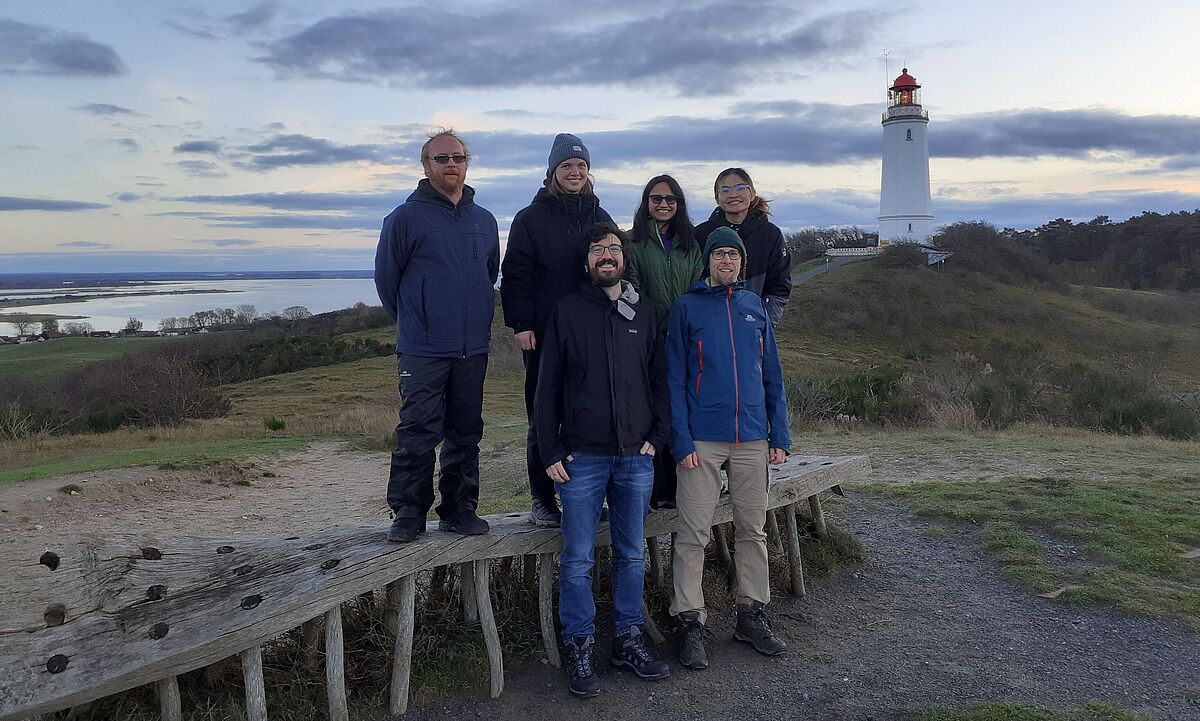
Lab retreat, Hiddensee, November 2023
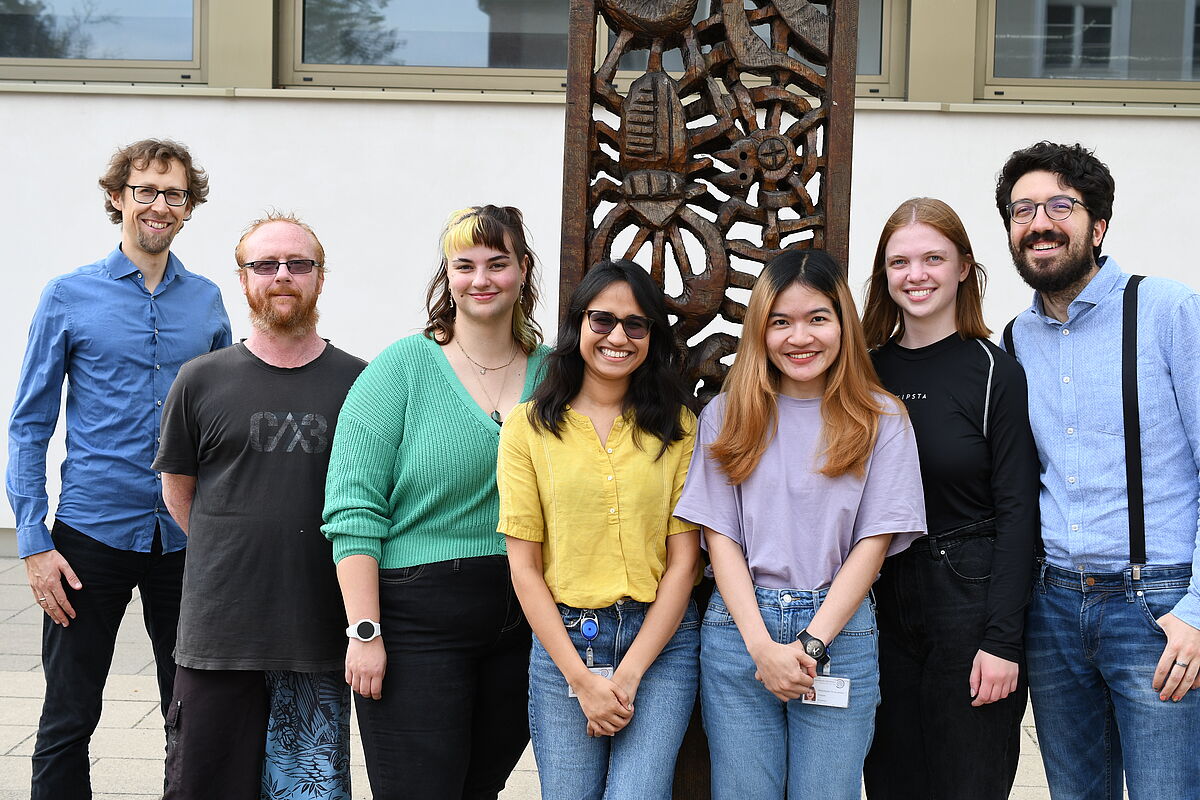
Group photo September 2023
